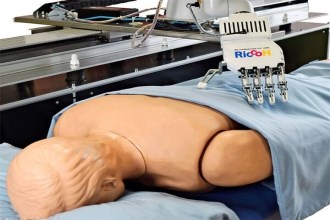
"Artificial intelligence technology can use a large amount of fingerprint data as 'raw materials', learn their structural characteristics and detailed information, and reorganize according to certain rules to generate forged data with extremely high degree of simulation." Sun Libin, an expert in the artificial intelligence industry, told Science and Technology Daily reporter.
Recently, a paper published by New York University and Michigan State University detailed how deep learning techniques can weaken the security system for fingerprint recognition.
AI can fake fingerprints, is fingerprint security still safe?
Generate counterfeit fingerprints against the network
"Fingerprint recognition, that is, identification by identifying the fingerprint path. Although fingerprint recognition is widely used, it has certain drawbacks. Because the touch verification method has high requirements on the environment, it has more requirements on the humidity and cleanliness of the finger, and the fingerprint wear will also cause Other difficulties are difficult to identify; others are not fingerprinted, or the fingerprint characteristics are too small to be imaged; it is not negligible that fingerprint traces are easy to retain, there is a possibility of being copied, and the cost of fraud is low." Fan Haoqiang, a researcher at the Institute of Science and Technology, told Science and Technology Daily reporter.
The paper shows that researchers use neural network data to train basic software to create convincing forged fingerprints that are even better than the original fingerprint material. “The team uses neural network technology variants to generate counterfeit fingerprints against the network,” said Julian Tojilius, an associate professor at New York University.
“Generating the confrontation network is a very popular deep learning algorithm. It is essentially a generative model. Through confrontation training, it can create deep forged pictures with data noise, which can be used for data enhancement, and can also be used to break specific Identification system." Fan Haoqiang said.
Sun Libin explained that artificial intelligence technology can also use the human eye and computer cognitive methods to embed some hidden attributes in the fingerprint image. Although the naked eye can't see it, the computer can capture this information and use the fake fingerprint image to identify the identity. The purpose of identification. And many systems do not have a living body detection module, and it is impossible to determine whether the acquired image is from a real human body. This loophole enables the forged fingerprint image to be verified by the system.
Fingerprint, face, and iris recognition each have their own characteristics
Fan Haoqiang introduced that in terms of biometric identification, common applications include fingerprint recognition, face recognition, and iris recognition.
Iris recognition, currently mainly seen in the iris recognition unlock of some high-end smartphones. Compared with fingerprint recognition, iris recognition technology recognizes the identity through the unique iris characteristics of the human body. The accuracy of iris recognition is higher in various biometrics, but compared with other biometric technologies, iris recognition hardware is expensive. The identification process needs to be coordinated, and it is difficult to promote it on a large scale. The lens may produce image distortion and reduce reliability. Therefore, the image acquisition and pattern matching of iris recognition are relatively inconvenient, and there are still many technical difficulties to achieve large-scale commercialization.
"Face recognition, computer image processing technology extracts key feature points from human face, compares and analyzes the features of the completed face feature template and the verified person, and gives similar values according to the analysis result. It can be determined whether it is the same person. Face recognition can be automatically captured and verified compared to fingerprints that need to be touched and irises need to cooperate. Face recognition is more convenient and the application scene is more abundant. Fan Haoqiang said.
Multimodal fusion is more secure
Fan Haoqiang analyzed that face recognition has two dimensions that cannot be ignored in evaluating security.
“It is easy to obtain. This includes obtaining face data and bottom library data of the application scenario. It is impossible to complete the recognition comparison with only a single data. Currently, whether the data is collected, called, or compared in the face recognition business application scenario. All aspects need to be carried out with the knowledge and consent of the user. The core database of the face biological sample is controlled by the core institutions such as the public security and the central bank, and is not entitled to the general commercial operators.” Fan Haoqiang said, followed by Whether it is easy to break. This not only tests the strength of the algorithm, but more importantly, it is resistant to attack.
"In general, face recognition is currently safe in the field of biometrics. Of course, it is not foolproof. To achieve face recognition security and scale, it requires technical level, laws and regulations, and industry standards to be gradually improved." Fan Haoqiang said .
Sun Libin believes that biometrics develops rapidly, and the biological characteristics of different modalities have their own characteristics, and their anti-counterfeiting capabilities are also different. To be more resistant to the risk of prosthetic attacks, multimodal fusion recognition methods, such as gait and face recognition, can greatly increase the difficulty of forging data and improve the security of the recognition system.

 영어
영어  중국어
중국어  독일어
독일어  한국어
한국어  일본어
일본어  Farsi
Farsi  Portuguese
Portuguese  Russian
Russian  스페인어
스페인어 





